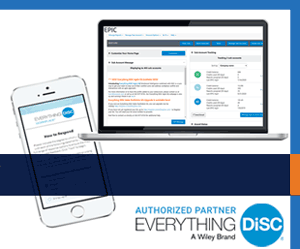In the DiSC personality types, each style is unique and highlights different ways of thinking, behaving, and interacting with others. Today, we’re focusing on the D style, known as the Dominant Personality Type or simply Dominance. Individuals with this style are known for being direct, driven, and results-oriented. They are the go-getters of the world, and understanding their traits can lead to better workplace dynamics and stronger professional relationships. Let’s dive in!
Common Traits of the D Style
People with a dominant personality tend to be:

- Determined: They have a clear vision of what they want and are focused on achieving it.
- Outspoken: Communication is straightforward; you’ll always know where they stand.
- Fast-paced: They thrive on urgency and are dedicated to maintaining momentum.
- Ambitious: Success is never out of reach; they relentlessly pursue their goals.
These qualities position D style individuals as natural leaders, especially in high-pressure environments.
Motivations: What Drives a D Style?
To truly understand a D style, a DiSC assessment can help you know what motivates them. They are fueled by:
- Authority: They flourish in roles where they can exert control and make decisions.
- Challenge: Obstacles represent opportunities for them to showcase their capabilities.
- Success: Winning is paramount, whether in competitive scenarios or project outcomes.
Priorities of the D Style
Their focus often revolves around:
- Taking action: They’re not the type to sit around and wait for things to happen. They make things happen.
- Accepting challenges: The tougher the obstacle, the more determined they are to conquer it.
- Achieving results: Achieving objectives is always top of mind, driving them toward accomplishment.
Stressors in the Workplace
Like anyone, those with a Dominant Personality Type face specific stressors:
- Strict rules or protocols: Procedure and micromanagement can be a real frustration for them. They prefer autonomy in their work.
- Lack of control: Situations where they cannot exert influence can lead to frustration and potential conflict.
Fears of the D Style
While they may come across as fearless, individuals with a dominant personality have their vulnerabilities:
- Losing the upper hand: They may feel uncomfortable showing any weakness.
- Being taken advantage of: Trust can be hard to come by, as they want to ensure they are not being manipulated or used.
How D Style Influences Others
D style individuals have a significant impact on those around them. They often use:
- Assertiveness: They are not afraid to express their opinions or take control of situations.
- Insistence: They expect things to be done their way and often push for their vision to be realized.
- Competition: Everything can be a competition. They’re naturally inclined to measure success by comparison, often driving others to raise their game.
Handling Conflict as a Dominant Personality Type
When conflict arises, a D Style person doesn’t shy away. Instead:
- They speak up about problems: They will voice their concerns and ensure their perspective is heard.
- They look to even the score: Resolving a conflict often involves making sure everything feels “fair” in their eyes, which can sometimes mean pushing back aggressively.
Areas for Growth: What D Style Individuals Can Work On
While D Styles excel in many areas, there are aspects they can improve:
- Patience: Not everything moves at their pace. Learning to slow down and be patient can benefit their relationships and work outcomes.
- Empathy: They can sometimes come across as too focused on results and less attuned to the feelings of others. Cultivating empathy can improve their leadership style.
- Not always needing to win: D style individuals often see situations in terms of winning or losing. Recognizing that not everything is a competition can reduce stress and improve collaboration.
How to Respond to a D Style Boss
If your boss has a dominant personality, here are a few key strategies to keep in mind:
- Minimize questions: Efficiency is key; avoid unnecessary details.
- Propose solutions: If a deadline isn’t specified, suggest one and confirm.
- Be proactive: Show initiative to demonstrate your commitment.
- Avoid excuses: Focus on delivering results rather than justifying delays.
- Provide concise updates: Use brief reports to keep them informed.
- Be direct: Communicate tasks and expectations clearly and succinctly.
Conclusion: Leveraging the Dominant Personality Type’s Strengths
Understanding the D Style, or Dominant Personality Type can help you navigate interactions with individuals who fall into this category. Whether you’re working for, alongside, or managing a dominant personality, recognizing their motivations, priorities, and potential growth areas can enhance collaboration and drive success. By adapting your communication and approach, you can foster a more productive and harmonious work environment.
By embracing the strengths of the D style while recognizing their challenges, both individuals and organizations can thrive in high-energy, results-driven environments.
Explore other posts in this 4-part series:
- Discovering the i Style: Unleashing Your Social Power of the Influence Personality Type
- Steady and Supportive: Discovering the DiSC Personality Type S
- Discovering the C Personality Type: Conscientiousness at Work
If you would like to learn more about your personality type, or the personality types of your team, consider Everything DiSC Workplace.




